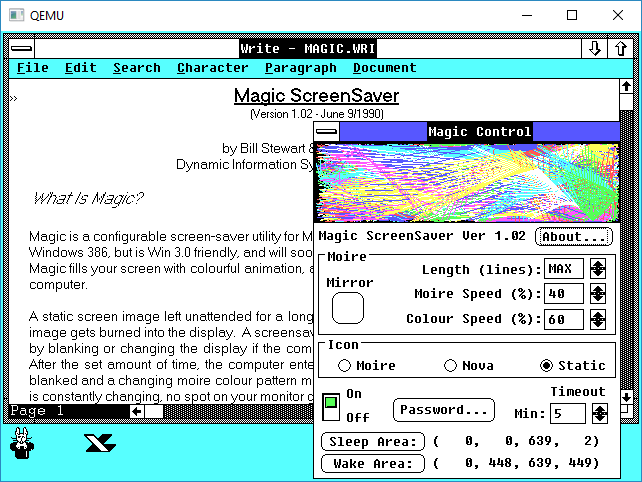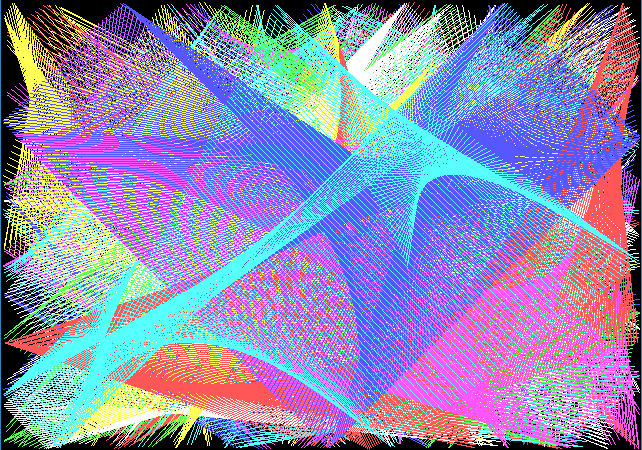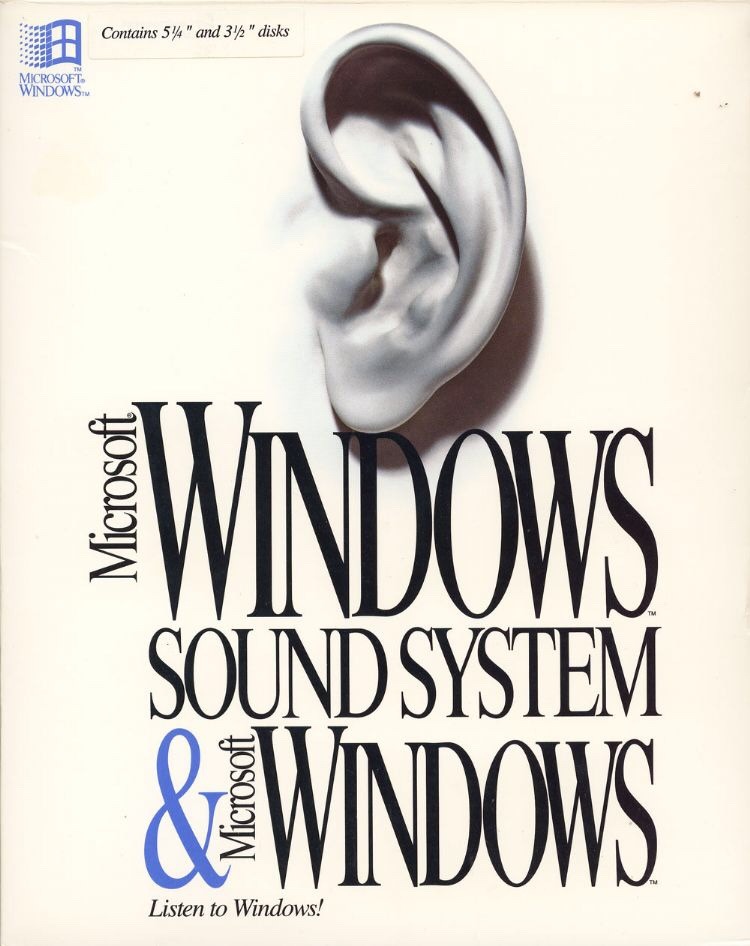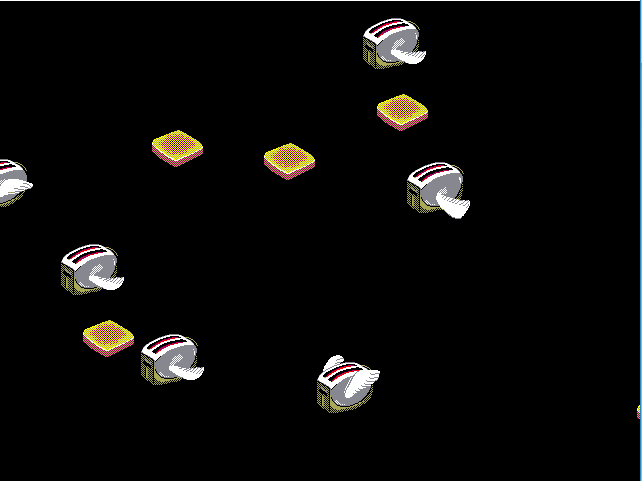I found this kind of interesting, a breakdown from the original guy behind the once popular After Dark screen saver.
- UX lessons from the Magic of Screensavers (part I)
- UX lessons from designing After Dark (screensavers II)
As it started as an experiment on Windows 2, it became a product on it’s own, and launched an entire industry, along with being copied by every major OS vendor. In the 90’s having a screen saver was key, just as having simple games like solitaire, especially a broken shuffle one where the user wins most of the time led to Windows being heavily favored in the work space.
So for the heck of it, I figured I’d check it out, and as always thanks to Jason Scott, there is a copy of 1.02 on cd.textfiles.com And as reported it’s basically the ‘mystify your mind’ screen saver.
The runaway hit Magic Screensaver became After Dark, which then had several licensed addons like the Simpsons, Star Wars etc. Back then themes for Windows were popular along with sound effects. A lot of the functionality is still in Windows, although most people prefer that their machines are silent, only making audible alerts if there really is something wrong. But back in the day a ‘multimedia desktop’ was a $5,000 noise maker, and not many offices were impressed. Which of course gave rise to the ‘office sound card’
Naturally under Windows there were virtual device drivers to emulate a sound blaster, as people still wanted to game with this cheaper ‘business audio’ card, although with the rise of Windows 95/Direct X gaming under Windows finally became a thing making Sound Blaster compatibility a thing of the past.
But going back to After Dark, they made a fatal error of teaming up with Berkeley Systems, who eventually started to make their own releases pushing the original team out of their own product.
The toasters became focal in a few lawsuits, namely the Jefferson Airplane album, although it was dismissed as the artwork for the album had not been trademarked! And they were able to force the Opus ‘n Bill screen saver where Opus shoots the toasters. Late they changed the toasters to have propellers to avoid being too similar.
Oddly stuff like screen savers too have largely fallen out of fashion with the rise of power saving monitors that just turn themselves off either from a lack of new images, or a signal from the OS.
One of those weird legacy things that in today’s world really doesn’t have that much meaning, but a scant 20 years ago was a major industry.






I like jwz’s position on the matter of power saving making screensavers unfashionable:
“Any time some pedantic jerk says “YOU KNOW, screen savers aren’t really NECESSARY with modern monitors” I want to ask them “How awful is it to have been born without a soul?” Screen savers are art. As long as computers have screens, people will make art for them. I also find it amusing when I am in an art museum or gallery and see a “digital installation” where the only difference between that work and a “screen saver” is that they wrote an “artist’s statement” about how it explores the dichotomy between whatever — and/or someone gave them a grant for it.”
( https://www.jwz.org/blog/2017/01/sleep-mode-the-art-of-the-screensaver/ )
I will not be running UIs without screensavers and scrollbars on any computers I own (okay Gnome? 🙂 ).
All too true. Themes, screen savers, everything used to give PC’s a little bit of personality, even though most came from boxed addons, or the later Plus! packs, and whatnot. But with the launch of Vista, and OS X being… well for some reason utterly devoid of any soul, yeah… blank screens.
What was wrong with virtual fish tanks? With modern GPU’s they’d at least look good.
Screen savers replaced an earlier market of software dedicated to displaying specific graphics. Why bother with Fractint when After Dark includes a fractal module with the ability to scroll through the color palette?
Screen savers and themes have largely died off thanks to those being a frequent malware vector. The other issue was the cost of operating large screen CRTs. Wasting millions on having screen savers run during lunch seems imprudent. jwz may prefer soul but failure to turn a profit tends to shorten corporate existence.